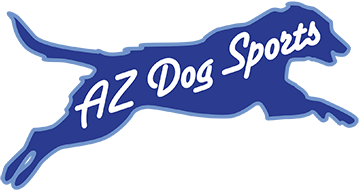Jessa Parker answers our most asked questions about Service Dogs
Service Dog Q&A
Q: “What really makes a service dog a service dog?”
A: The real answer is hundreds and hundreds of hours spent training that animal as well as the person holding the leash. Service dogs as defined by the American with Disabilities Act (ADA) are dogs that are individually trained to do work or perform tasks for a person with a disability. “Doing work or performing tasks” usually means that the dog has been specially trained to do something for this person who is disabled that they cannot do for themselves safely or at all. In addition to task training, a service dog needs extensive public access training; to ensure the dog is calm, under control, and as unobtrusive as possible.
Q: “What’s the difference between a service dog and an emotional support animal?”
A: There are a few very important differences between a service dog and an emotional support animal. The first difference is the kind of animal. Only dogs and miniature horses can be used as service animals with public access in America. The law that recognizes a person’s right to use a service animal is called the American with Disabilities Act (ADA). The ADA states that an animal whose sole function is to provide emotional support is not considered a service animal, and the handler is not allowed to bring that animal into public.
Q: “What kind of training should a real service dog have?”
A: A whole lot of it. In all seriousness, service dogs need training so they can enjoy working in stressful public environments and be good at their job. Most service dogs are raised from puppy-hood over the course of several years to become a working service dog. All service dogs need lots of positive socialization with public environments, and advanced obedience training. Service dogs need to stay calm around intense distractions, while also being focused on their handler and performing their potentially lifesaving task work. The task training depends on the type of service the dog provides. There are guide dogs for the visually impaired, hearing-alert dogs for deaf individuals, medical alert and medical response dogs which can include psychiatric response dogs, and mobility assistance dogs.
Q: “What qualifies someone to use a service dog?”
A: The first and really only qualifier is that you have a life-altering disability. If a service dog can be trained in tasks that mitigate your disability and provide more independence in your life then you qualify. A service dog is essentially a type of medical equipment. Service dogs require special handling, continued training, and are actually a whole lot of work. It is up to each person to determine if the assistance of a service dog is worth the effort of handling and maintaining the service dog.
Q: “Can any dog be a service dog?”
A: Yes and no. Any breed of dog could be a working service dog, it would depend on the person’s needs and how their disability affects their daily life. However, most dogs do not have the right temperament for public access work. A lot of dogs can be trained as home-helpmates and learn to do tasks for their owner at home; but these dogs may not be able to work reliably in public due to a potential for fear, reactivity, or aggression.
Q: “What is the deal with fake service dogs?”
A1: There is no such thing as a fake service dog. There are only irresponsible humans that are bringing untrained or uncontrolled dogs into public places where these dogs misbehave. When someone enters a non-pet friendly store with a dog they are essentially stating that the dog is a service dog required because of a disability. It is up to the service dog handler to maintain control of their dog while in public. If a service dog is out of control, damages property, or is not house broken; a business can ask the handler to remove the dog.
A2: The deal with fake service dogs is actually irresponsible humans. Unfortunately, when you see a dog misbehaving in public the dog is either a real service dog who needs more training or re-training, or it is a person’s untrained pet. This person is actually impersonating someone with a disability to bring their pet into what is a very stressful environment for the animal.
Service dogs are incredible animals who help their handler’s achieve new levels of independence. Anyone can work on training their dog to be a helper at home, and teach them to be calm around distractions. If you would like to learn more about service dogs and dog training in general, contact us at AZ Dog Sports.
Jessa Parker is a Certified Professional Dog Trainer (CPDT-KA) working at AZ Dog Sports in Paradise Valley.
Jessa has been training service dogs for the last five years, specializing in mobility assistance and diabetic alert dogs.



